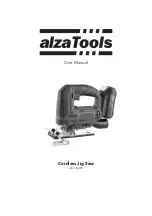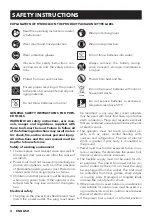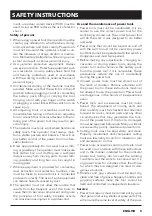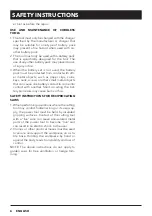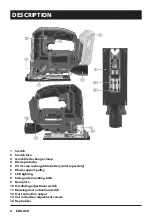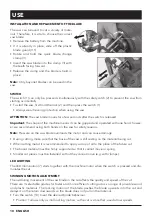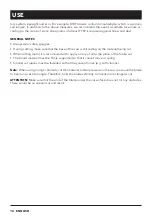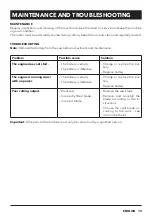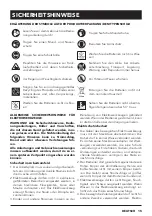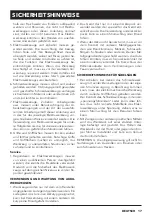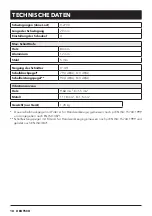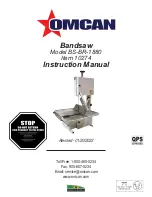
4
ENGLISH
EXPLANATION OF SYMBOLS ON THE PRODUCT PACKAGING/TYPE LABEL
Read the operating instructions careful-
ly before use!
Wear protective gloves
Wear mouth and nose protection.
Wear noise protection.
Wear protective glasses
Do not throw batteries into water!
Observe the safety instructions con-
cerning recoil and the safety precau-
tions.
Always remove the battery during
work, transport, storage, maintenance
or repair.
Protect from rain and moisture.
Protect from heat and fire.
Ensure proper recycling of the product
at the end of its service life and all pack-
aging materials.
Do not dispose of batteries with normal
household waste.
Do not throw batteries into a fire!
Do not expose batteries to excessive
temperatures above 50 °C.
GENERAL SAFETY INSTRUCTIONS FOR POW-
ER TOOLS
WARNING! All safety instructions, user man-
uals, images and regulations supplied with
these tools must be read. Failure to follow all
of the following instructions may result in elec-
tric shock, fire, and/or serious personal injury.
All instructions and the user manual must be
kept for future reference.
Safety of working environment
1. The workplace must be kept clean and well lit.
Untidy and dark spaces are often the cause of
accidents.
2. Power tools must not be used in potentially ex-
plosive atmospheres, such as in the presence
of flammable liquids, gases or dust. Power tools
create sparks that can ignite dust or fumes.
3. Children and other persons must be kept away
when using power tools. If the operator is dis-
turbed, he/she may lose control of the opera-
tion.
Electrical safety
1. The plug on the power tool's flexible lead must
match the power outlet. The plug must never
be modified in any way. No socket adapters
may be used with tools that have a protective
earth connection. Plugs and respective sockets
that are rendered unusable will reduce the risk
of electric shock.
2. The operator must not touch grounded ob-
jects, such as pipes, central heating units,
cookers and refrigerators. The risk of electric
shock is greater if your body is connected to
the ground.
3. Power tools must not be exposed to rain, mois-
ture or wetness. If water enters the power tool,
the risk of electric shock increases.
4. The flexible supply must not be used for oth-
er purposes. The power tool must not be car-
ried or pulled by the cord, nor must the plug
be unplugged from the socket. The inlet must
be protected from heat, grease, sharp edges
or moving parts. Damaged or tangled leads
increase the risk of electric shock.
5. If the power tool is used outdoors, an extension
cord suitable for outdoor use must be used. Us-
ing an extension cord for outdoor use reduces
the risk of electric shock.
6. If the power tool is used in a humid environ-
SAFETY INSTRUCTIONS
Summary of Contents for AT-CJS20V
Page 1: ...Cordless Jig Saw AT CJS20V User Manual...
Page 2: ......
Page 3: ...ENGLISH 4 DEUTSCH 15 ESKY 26 SLOVENSKY 37 MAGYAR 48...
Page 61: ......
Page 62: ......
Page 63: ......

